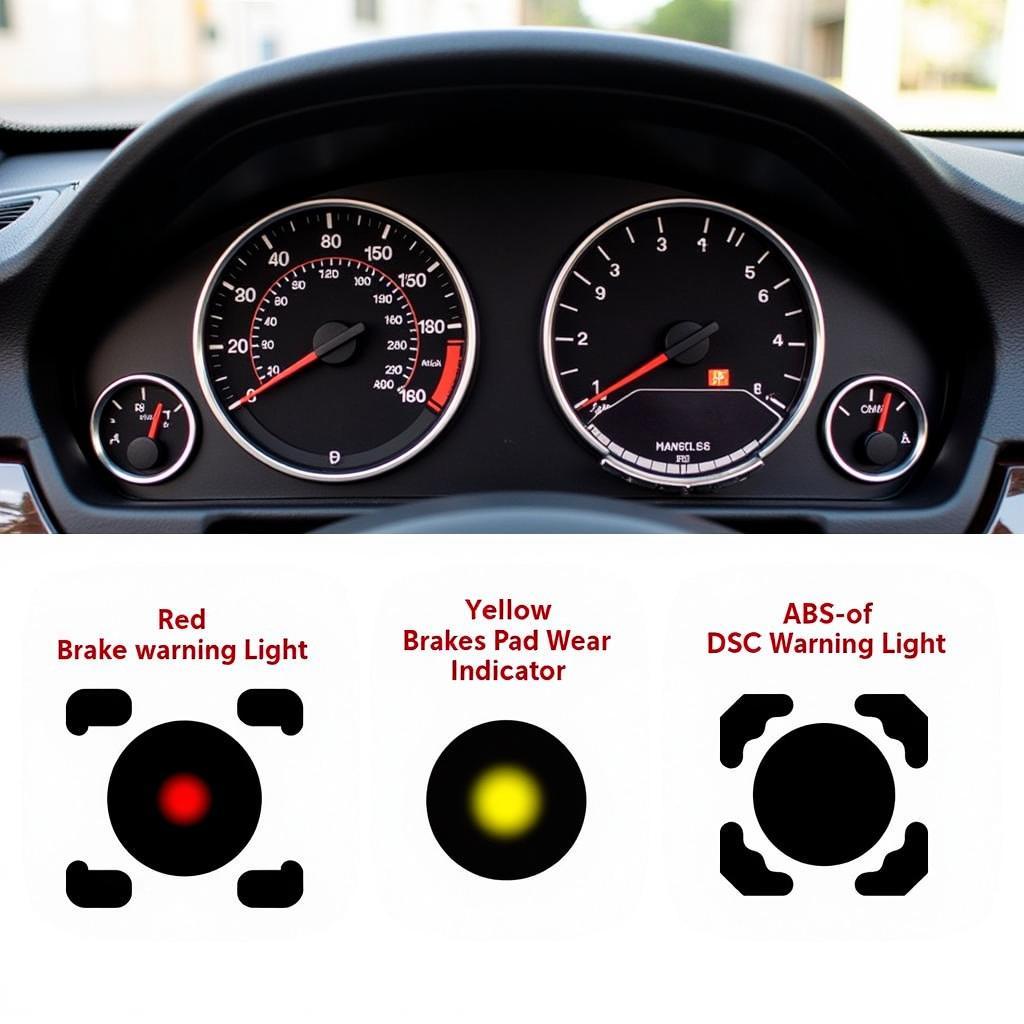The brake warning light on your 2012 Honda CRV is a crucial safety feature that should never be ignored. When illuminated, it signals a potential issue with your braking system that requires immediate attention. Understanding the common causes of this warning light and knowing how to address them can help ensure your safety and prevent costly repairs.
This comprehensive guide will delve into the possible reasons behind a 2012 Honda CRV brake warning light, guide you through some basic troubleshooting steps, and offer solutions to get you back on the road safely.
Common Causes of a 2012 Honda CRV Brake Warning Light
There are several reasons why your 2012 Honda CRV’s brake warning light might be on. Some of the most common causes include:
-
Low Brake Fluid: This is the most frequent culprit behind an illuminated brake warning light. Brake fluid is essential for transmitting force from the brake pedal to the wheels, ensuring effective braking. A leak in the system or worn-out brake pads can lead to low brake fluid levels.
-
Worn Brake Pads: Brake pads are designed to wear down over time. When they become too thin, the brake warning light will illuminate to signal the need for replacement. Driving with worn-out brake pads can severely compromise your braking performance and lead to more expensive repairs.
-
Faulty Brake Light Switch: The brake light switch is responsible for activating your brake lights when you press the brake pedal. A malfunctioning switch can trigger the brake warning light and prevent your brake lights from working correctly, posing a safety hazard.
-
ABS Issue: Your 2012 Honda CRV is equipped with an Anti-lock Braking System (ABS). If the ABS system encounters a problem, it can trigger the brake warning light. This could indicate a malfunctioning sensor, a problem with the ABS control module, or an issue with the wiring.
-
Parking Brake Engaged: While seemingly obvious, sometimes the simplest explanation is the most likely. If your parking brake is even slightly engaged, it can cause the brake warning light to stay illuminated.
Troubleshooting a 2012 Honda CRV Brake Warning Light
Before rushing to a mechanic, there are a few simple checks you can perform yourself:
-
Check the Parking Brake: Ensure the parking brake is fully disengaged. Sometimes, a slight bump can be enough to activate the warning light.
-
Inspect Brake Fluid Level: Locate the brake fluid reservoir under the hood of your CRV (refer to your owner’s manual for the exact location). Carefully check the fluid level. It should be between the minimum and maximum lines. If it’s low, add the correct type of brake fluid as recommended by Honda.
-
Visual Inspection: Look for any visible signs of brake fluid leaks around the wheels, brake lines, and under the vehicle.
Important Note: If you find yourself adding brake fluid frequently, it indicates a leak in the system. It’s crucial to have a professional mechanic inspect your brake system immediately.
When to Seek Professional Help
If the brake warning light remains illuminated after performing the basic checks or you notice any of the following, seek professional assistance from a qualified mechanic immediately:
- Soft or Spongy Brake Pedal: This indicates a potential problem with your brake system’s hydraulic pressure and requires immediate attention.
- Grinding Noises When Braking: A grinding sound while braking usually signifies metal-to-metal contact, often due to severely worn brake pads.
- Pulling to One Side While Braking: If your CRV pulls to one side when you apply the brakes, it could point towards uneven brake pad wear, a brake caliper issue, or a problem with the hydraulic system.
- Brake Pedal Goes to the Floor: This is a dangerous sign of a major brake system failure and requires immediate attention.
Expert Insights
“Ignoring a brake warning light is like playing Russian roulette with your safety,” says John Smith, a certified master automotive technician with over 20 years of experience specializing in Honda vehicles. “Even if you think it’s a minor issue, it’s always best to err on the side of caution and have your brake system thoroughly inspected by a professional.”
“Remember, regular maintenance is key to preventing brake problems,” adds Smith. “Following the recommended brake fluid flush schedule and having your brake pads inspected during regular service appointments can save you a lot of trouble and expense in the long run.”
Conclusion
A glowing brake warning light in your 2012 Honda CRV should never be taken lightly. Understanding the potential causes and taking prompt action can help ensure your safety on the road. While some simple checks can be done at home, don’t hesitate to seek professional help if you’re unsure about anything related to your CRV’s braking system. Remember, a well-maintained brake system is crucial for your safety and the safety of others on the road.



